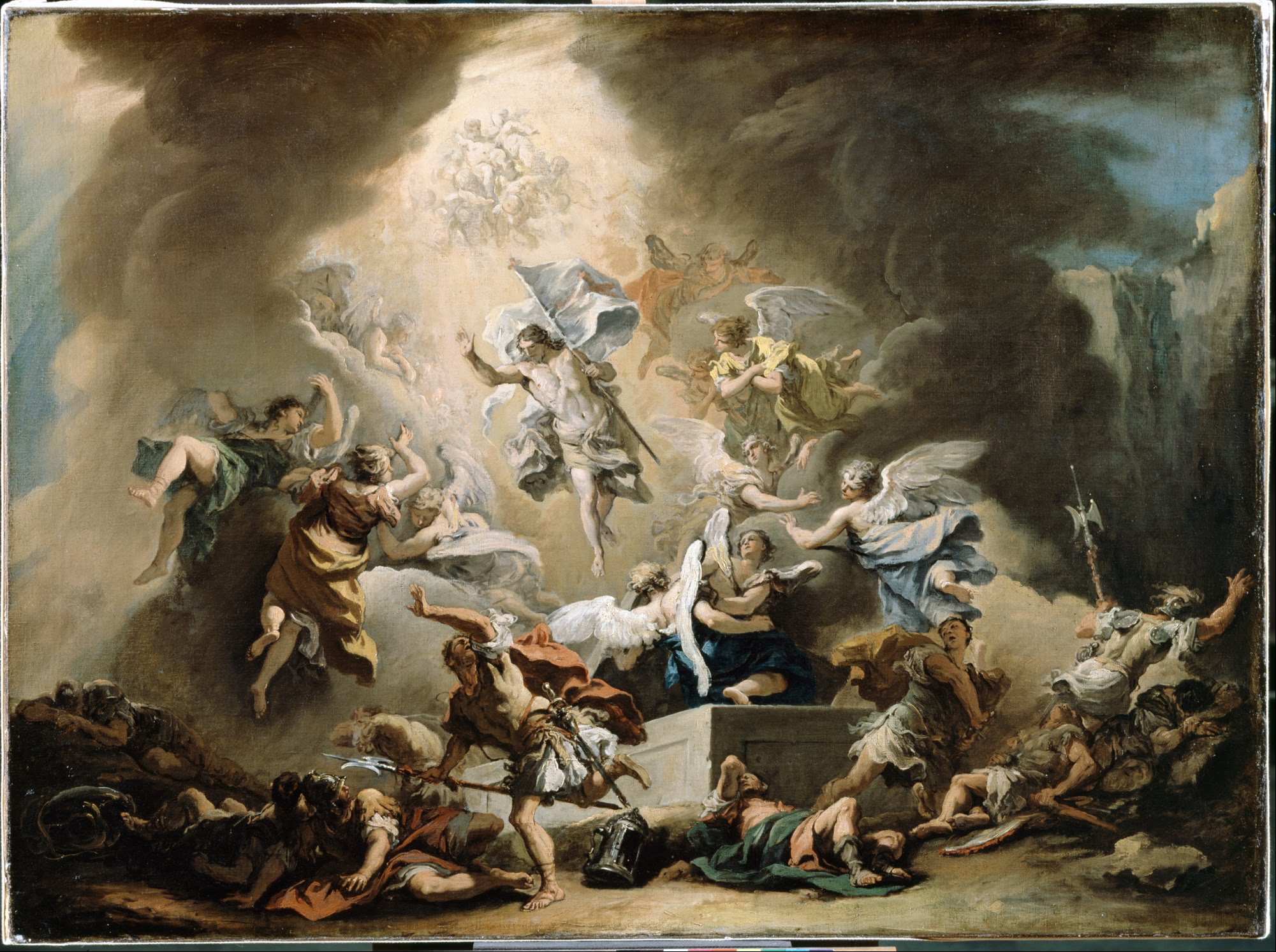I am a long-time fan of the television quiz show “Jeopardy.” Many categories throw me completely (pop culture, sports, and geography in particular), but usually I can hold my own. I particularly enjoy Bible questions, which often completely throw the on-screen contestants. Last week, I was tickled when the Final Jeopardy question was in the category “Old Testament Books.” So, after the commercial break, I was a bit thrown when the clue was, “By Hebrew word count, the longest book bears this name that led to a word for a long complaint or rant.” The reference to “jeremiad” made the answer they were looking for clear, but I thought (and said out loud to the television screen) “Jeremiah isn’t the longest book!”
![The Jeopardy episode was picked up by people on social media, many of whom blasted the show's producers and host for revising history [File: Chris Pizzello/AP]](https://www.aljazeera.com/mritems/imagecache/mbdxxlarge/mritems/Images/2020/1/11/c4affaa5eaf54e6b8e97d1d1c67f7fe3_18.jpg)
Jeopardy has gotten it wrong before. Usually, they get it right in the end–often, before the final credits roll. But this past year, one question with a wrong answer was not corrected. The clue, under the category “Where’s that Church?”, was, “Built in the 300s A.D., the Church of the Nativity.”
[Katie] Needle, a retail supervisor from Brooklyn, responded it was in Palestine but was told her answer was wrong. One of the other two contestants, Jack McGuire, then buzzed in with the reply “Israel”, which host Alex Trebek accepted as correct.
As it happens, I have been to the Church of the Nativity, in Bethlehem in the West Bank. I know people who live and work in Bethlehem. Bethlehem is not in the state of Israel: you must pass through a security checkpoint at the border between Israel and the West Bank to get there.

As the Arab news agency Al-Jazeera accurately reported,
The Church of Nativity, declared a world heritage site, is located in Bethlehem in the occupied West Bank, which is internationally-recognised as part of Palestine.
Particularly as Israel continues to annex Palestinian land, displacing families, many of them Christian, who have lived in the land for generations, it is tragic that this error has still not, to my knowledge, been corrected.
At any rate–knowing, as I did, that the longest book in the Bible is the book of Psalms, I was confident that Jeopardy had erred again. But my old friend from graduate school, fellow United Methodist minister Frank Norris, set me straight. He posted on Facebook a link to an article by Justin Taylor in “The Gospel Coalition” titled “What Is the Longest Book in the Bible? (Hint: It’s Not the Psalms).”
The article cited the work of David J. Reimer, a fellow Ezekiel scholar. The book of Psalms is certainly the longest by chapter divisions (there are 150 Psalms, after all; no other biblical book gets out of double digits!), or by verse count (2,527 in the Psalms). But Dr. Reimer recognized that verse or chapter count wasn’t the best approach, as these divisions are mostly late, and not generally included in the biblical texts until the Middle Ages. He proposed three other criteria for length:
- “Graphic units” counts the number of Hebrew words in a particular book using BibleWorks (e.g., there are seven “graphic units” in Genesis 1:1).
- “Morphological units” was found according to the Groves-Wheeler Westminster Morphological database (which separates prefixed elements, but not pronominal suffixes; e.g., there are eleven “morphological units” in Genesis 1:1).
- The “Bytes” figure calculates the length of the Hebrew book in ASCII format (i.e., so there is no interference from extraneous word-processor code).
Placing the top ten in a chart:
| Order | Book | # Verses in Book | Graph-unit Hits | Morph-unit Hits | Bytes |
| 1. | Jeremiah | 1,364 | 22,285 | 30,203 | 241,209 |
| 2. | Genesis | 1,533 | 20,722 | 28,848 | 226,894 |
| 3. | Psalms | 2,527 | 19,662 | 25,465 | 238,562 |
| 4. | Ezekiel | 1,273 | 19,053 | 26,572 | 214,416 |
| 5. | Isaiah | 1,291 | 17,197 | 23,204 | 191,777 |
| 6. | Exodus | 1,213 | 16,890 | 23,934 | 184,372 |
| 7. | Numbers | 1,289 | 16,583 | 23,363 | 182,945 |
| 8. | Deuteronomy | 959 | 14,488 | 20,329 | 159,872 |
| 9. | 2 Chronicles | 822 | 13,520 | 20,000 | 154,125 |
| 10. | 1 Samuel | 811 | 13,506 | 19,211 | 147,392 |
So–Jeopardy DID get it right: by Hebrew word count, Jeremiah is the longest book. Psalms is not even the second-longest book–by Hebrew word count, that would be Genesis. I was wrong–and happy to learn something new! The Bible does this to me all the time, I find.
The trivial question of the relative length of biblical books opens onto other, more interesting questions–specifically with regard to Psalms and Jeremiah. The Greek text of the Psalms differs in many ways from the Hebrew Masoretic text (MT) from which our Old Testament is translated. More of the Psalms are given titles in the Greek text, and more of those titles ascribe the poems they introduce to David. Most notably, however, the Greek text contains an additional, 151st Psalm.
I was small among my brothers,
and the youngest in my father’s house;
I tended my father’s sheep.
My hands made a harp;
my fingers fashioned a lyre.
And who will tell my Lord?
The Lord himself; it is he who hears.
It was he who sent his messenger
and took me from my father’s sheep,
and anointed me with his anointing oil.
My brothers were handsome and tall,
but the Lord was not pleased with them.
I went out to meet the Philistine,
and he cursed me by his idols.
But I drew his own sword;
I beheaded him, and took away disgrace from the people of Israel.
This psalm is found in Hebrew in 11QPsa (the Great Psalms Scroll, one of the so-called “Dead Sea Scrolls”), a manuscript of the Psalter from Qumran dating to around the time of Jesus. Although not used in Western churches, Psalm 151 is included in the Bibles of many Eastern Orthodox communities, including Greek and Slavonic Orthodox Churches. So the length of the book of Psalms may well depend on where you worship.
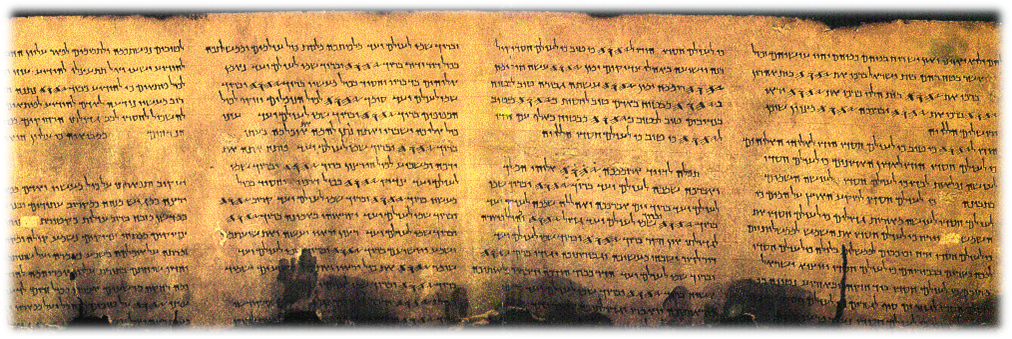
Similarly, the text of Jeremiah in the Greek Septuagint (LXX) differs significantly from the Hebrew MT–but this time, the Greek text is shorter (by about an eighth), and its chapters are differently arranged: chapters 46–51 (the prophet’s oracles against foreign nations) in our Old Testament appears instead following Jer 25:13a: “I will unleash upon that land everything I decreed, all that is written in this scroll.” Then, in the LXX, the material in our Jer 25:13b–46:5 resumes, followed by our Jer 52. In this case, the finds from Qumran are particularly intriguing.
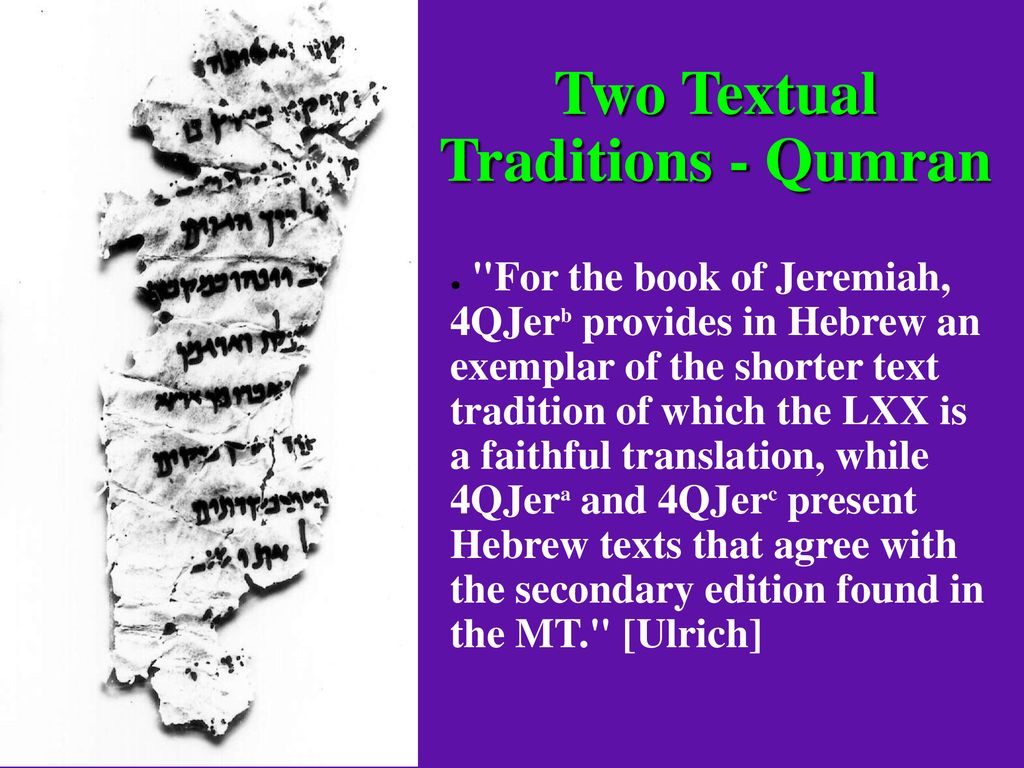
4QJera from before 200 BCE, and 2QJer, which on the basis of paleography (that is, the form of ancient writing used) dates roughly to the first century CE, place the oracles against the nations at the end of the book, and otherwise generally preserve the textual tradition of the MT. However, portions of Jer 9:21–10:21, written in Hebrew, were found in a fragment, 4QJerb, that looks more like the LXX. The fact that old Hebrew texts relating to both the LXX and the MT of Jeremiah were found at Qumran shows that ancient communities of faith treasured and studied both versions of Jeremiah. So it makes little sense in this case to ask whether the “real”–the best, most ancient, or original–book of Jeremiah is the shorter or the longer version!
We need to know that there is not just one, pristine original Hebrew version of Psalms, or Jeremiah, or indeed of ANY biblical book. Therefore Bible translators do not begin with how best and most faithfully to render the biblical languages into clear and understandable English. The prior question is which ancient version of a text to translate. Addressing text critical questions requires expert knowledge–and even experts may disagree as to their resolution. However, every reader of Scripture needs to be aware that these questions exist. Otherwise, we are vulnerable to misunderstanding and misinterpretation–and even to deliberate attempts to deceive.
For example: just this morning, a friend shared this meme, and asked me if there was anything to it (spoiler alert: there is NOT–and I have not included the poster or the address so as not to give them another platform to spread this deception).

VERY CRITICAL ALERT!!!
NIV was published by Zondervan but is now OWNED by Harper Collins, who also publishes the Satanic Bible and The Joy of Gay Sex.
•The NIV and ESV has now removed 64,575 words from the Bible
including Jehovah, Calvary, Holy Ghost and omnipotent to name but a few…
•The NIV and ESV has also now removed 45 complete verses. Most of us have the Bible on our devices and phones especially “OLIVE TREE BIBLE STUDY APP.”
•Try and find these scriptures in NIV and ESV on your computer, phone or device right now if you are in doubt:
Matthew 17:21, 18:11, 23:14;
Mark 7:16, 9:44, 9:46;
Luke 17:36, 23:17;
John 5:4; Acts 8:37.
…you will not believe your eyes.
•Refuse to be blinded by Satan, and do not act like you just don’t care. Let’s not forget what the Lord Jesus said in John 10:10 (King James Version).
There is a crusade geared towards altering the Bible as we know it; NIV, ESV and many more versions are affected.
•THE SOLUTION:
If you must use the NIV and ESV, BUY and KEEP AN EARLIER VERSION OF the BIBLE. A Hard Copy cannot be updated. All these changes occur when they ask you to update the app. On your phone or laptop etc. Please spread the word…
To address the first claim made above: it is true that Zondervan is owned by HarperCollins. But they purchased Zondervan over thirty years ago, in 1988. You can, if you wish, still access the NIV from 1984 online and compare it with later editions, made after 1988. When you do so, you will discover that the two passages cited in this meme read no differently in the 1984 NIV than in its post-1988 revisions.
So, first of all, the fundamental claim in this meme, that the NIV has been corrupted by “godless” editors from HarperCollins, is simply false. Refusing to update the NIV on your phone or computer, as this post recommends, makes no sense–again, the differences with the KJV that this post decries were already there over thirty years ago. Also, for the record, I highly recommend the HarperCollins Study Bible, which I have used in my Bible classes for years, as well as the HarperCollins Bible Dictionary and Bible Commentary. All three were prepared under the auspices of the Society of Biblical Literature, and should be on every pastor’s bookshelf.
However, the meme is certainly correct that the words cited here from the KJV do not appear in the NIV of those same passages, either before or after 1988. Not only the NIV, but the NRSV, the CEB, the ESV, and most other modern translations skip these sentences–although they are sometimes given in footnotes. That is because these words are not found in the oldest and best Greek texts of the Gospels.
The KJV translators in 1611 did not have access to as many texts as we do, and often included in their version very late additions and expansions to the biblical texts they were translating. Luke 9:56 and Matthew 8:11 are but two examples. Others include the Lord’s Prayer doxology in Matthew 6:13; the Trinitarian formula in 1 John 5:7-8, which is not found in any Greek text of 1 John from before the 16th century, and the inclusion of Erasmus’ explanatory expansion, “of them which are saved,” in Revelation 21:24.
These translators are not part of some imaginary “crusade geared towards altering the Bible as we know it.” To the contrary: they have decided to use the oldest and best texts available to yield the best translation of the Bible, rather than simply aping traditional language. We do not need to know the biblical languages or the ins and outs of text criticism to be faithful readers of Scripture, friends. However, we do need to be aware of these issues if we are to avoid senseless controversies (1 Timothy 6:20), and to read the Bible responsibly, comparing and selecting among translations, “rightly dividing the word of truth” (2 Timothy 2:15, KJV).



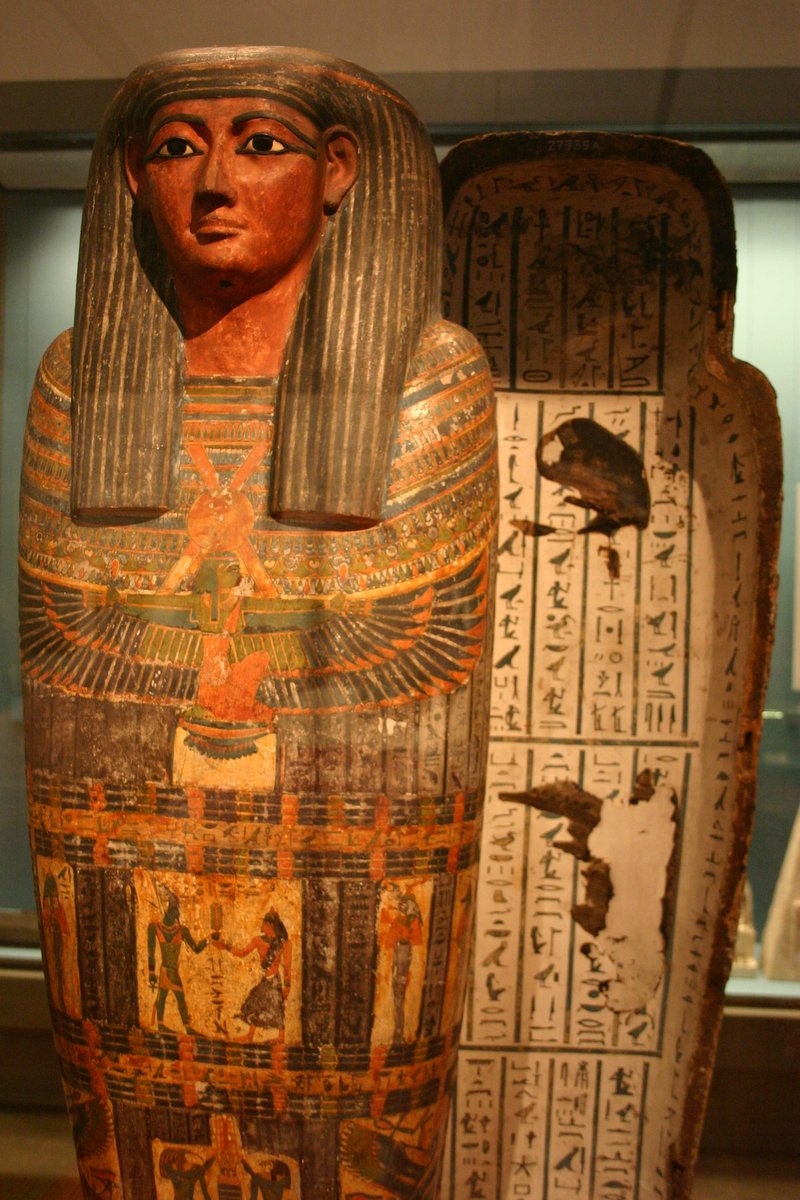

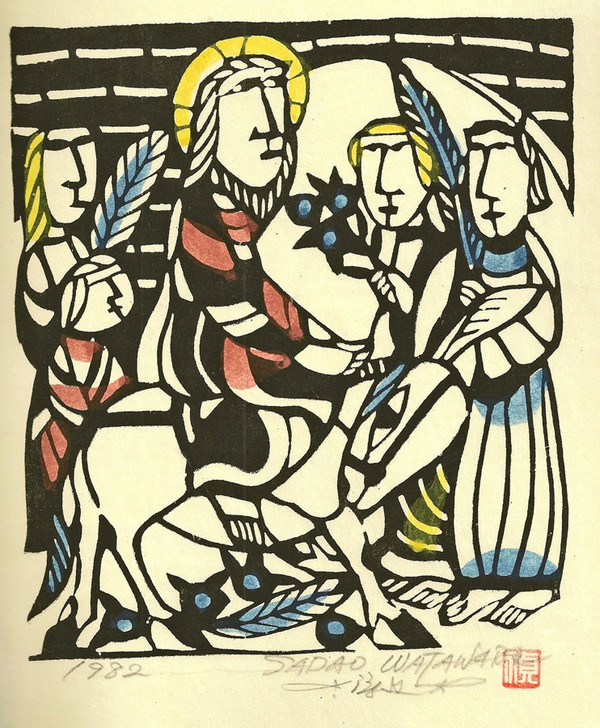 The alternate Hebrew Bible text for this Sunday in the
The alternate Hebrew Bible text for this Sunday in the 
![Title: Lift Every Voice and Sing, or, The Harp
[Click for larger image view]](http://diglib.library.vanderbilt.edu/cdri/jpeg/lift-every-voice8927xc.jpg)
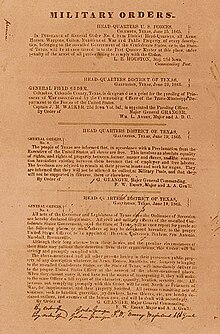




 But as Theodore Hiebert has observed (“The Tower of Babel and the Origin of the World’s Cultures,” Journal of Biblical Literature 126 [2007]: 29-58), that traditional reading misses the reason the text of Genesis itself gives for building the city and the tower:
But as Theodore Hiebert has observed (“The Tower of Babel and the Origin of the World’s Cultures,” Journal of Biblical Literature 126 [2007]: 29-58), that traditional reading misses the reason the text of Genesis itself gives for building the city and the tower: Why does God do this? Perhaps because, as Argentinian Methodist theologian
Why does God do this? Perhaps because, as Argentinian Methodist theologian 

![Title: Church of the Holy Sepulchre [Click for larger image view]](http://diglib.library.vanderbilt.edu/cdri/jpeg/L28-HolySepulchre.jpg) The Feast of the Ascension comes forty days after Easter. This year, that is today, May 21. Typically, Protestant churches don’t make much of this: partly, because the Feast always falls on a Thursday, but mainly, I suspect, because we are vaguely embarrassed by the whole idea of the Ascension. In our jet-setting days, ascension is no big deal: most of us have gone up in airplanes, flying from one airport to another in a different city, state, or nation. Further, we know that if you keep going up, you do not breach the dome of the firmament and enter the divine realm of celestial glory. Instead, you leave the atmosphere of our planet, and enter the unimaginable vastness of space: where there is no longer “up” or “down.”
The Feast of the Ascension comes forty days after Easter. This year, that is today, May 21. Typically, Protestant churches don’t make much of this: partly, because the Feast always falls on a Thursday, but mainly, I suspect, because we are vaguely embarrassed by the whole idea of the Ascension. In our jet-setting days, ascension is no big deal: most of us have gone up in airplanes, flying from one airport to another in a different city, state, or nation. Further, we know that if you keep going up, you do not breach the dome of the firmament and enter the divine realm of celestial glory. Instead, you leave the atmosphere of our planet, and enter the unimaginable vastness of space: where there is no longer “up” or “down.” With Judas in “Jesus Christ, Superstar,”
With Judas in “Jesus Christ, Superstar,” 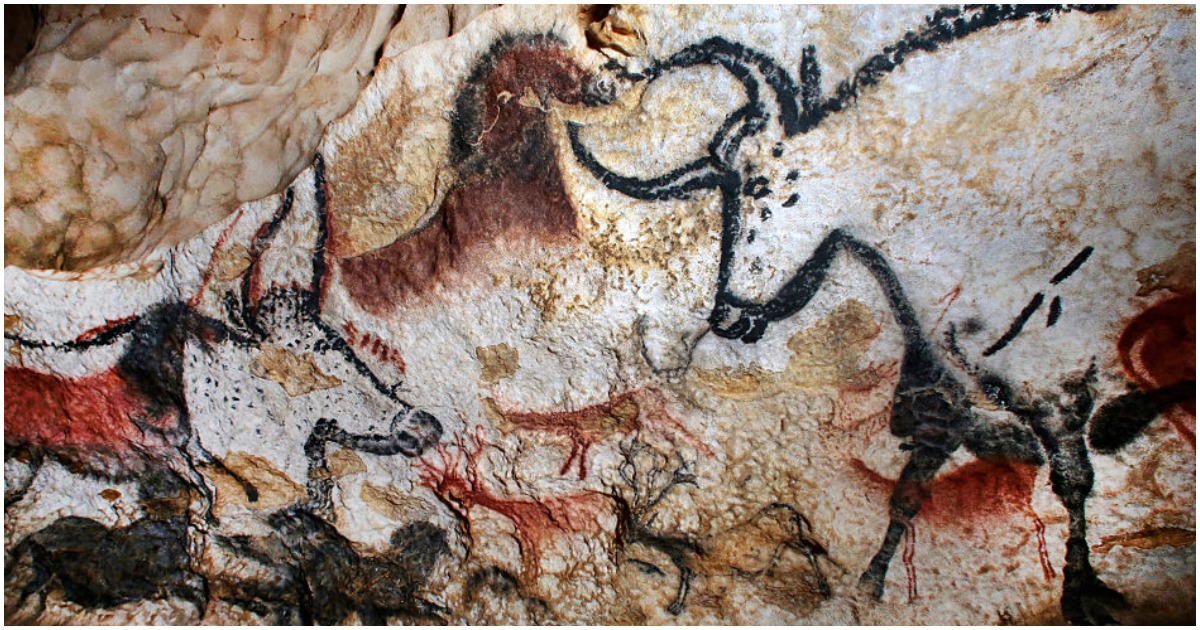 Already, we can learn much about God from other religions on this planet. Should we one day encounter the faith of an alien civilization, or somehow be able to gain access to the faith that moved the Stone Age cave painters, we could learn from them, too. But we Christians also have something to teach: the grand, unimaginable news that God has really done it–God has entered our reality of time and space in the scandalously particular person of Jesus of Nazareth. The Ascension declares that that same Jesus remains eternally God, a confession that, as
Already, we can learn much about God from other religions on this planet. Should we one day encounter the faith of an alien civilization, or somehow be able to gain access to the faith that moved the Stone Age cave painters, we could learn from them, too. But we Christians also have something to teach: the grand, unimaginable news that God has really done it–God has entered our reality of time and space in the scandalously particular person of Jesus of Nazareth. The Ascension declares that that same Jesus remains eternally God, a confession that, as ![Title: The Ascension [Click for larger image view]](http://diglib.library.vanderbilt.edu/cdri/jpeg/Mafa011.jpg)

 At the advice of the
At the advice of the 
 So, why these differences in a prayer we claim that Jesus taught us to pray? The language in the version of the Lord’s Prayer I learned melds the language in the two Gospel citations of this prayer (
So, why these differences in a prayer we claim that Jesus taught us to pray? The language in the version of the Lord’s Prayer I learned melds the language in the two Gospel citations of this prayer (

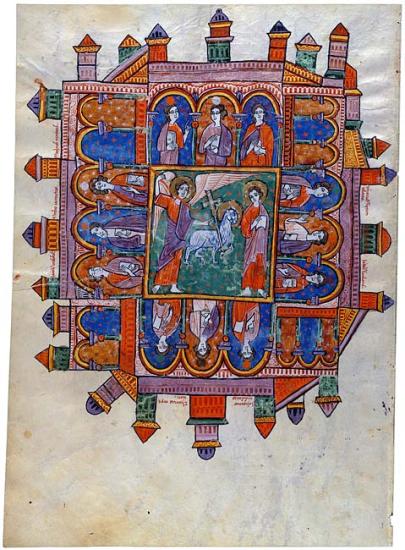


:max_bytes(150000):strip_icc():format(webp)/14983101064_9ca42eb6fe_k-5c3ea9dac9e77c0001778308.jpg) Similarly, in the New Testament, all four gospels (
Similarly, in the New Testament, all four gospels (





